By Finest-Hall
WHAT DOES VENTILATION IN PVC HALLS MEAN?
Ventilation, also known as air exchange or air circulation, refers to the process of replacing (polluted or humid) indoor air with clean(er) air to cool the space. Its purpose is to ensure the necessary air cleanliness, humidity, temperature, and airflow velocity in the ventilated areas. Natural and mechanical ventilation (using fans) are distinguished depending on the air movement method.
Ventilation is essential in any building, primarily for the well-being of people working inside. This is vital for uninsulated warehouses, such as PVC halls. If ventilation is lacking in a PVC hall (due to insufficient or absent ventilation openings), various issues will inevitably arise during warehouse use.
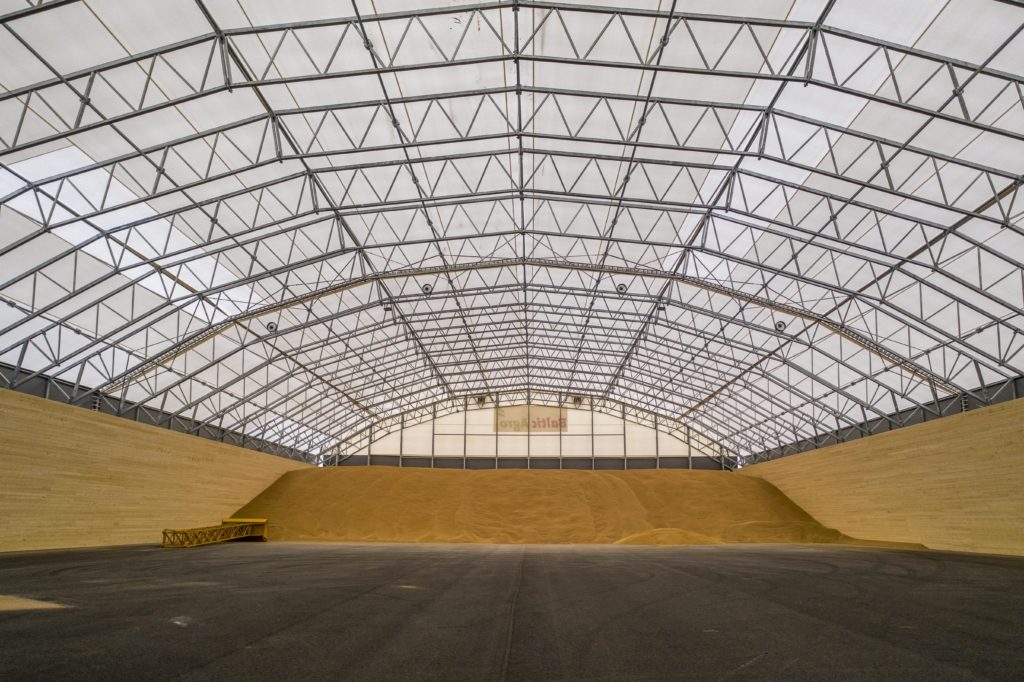
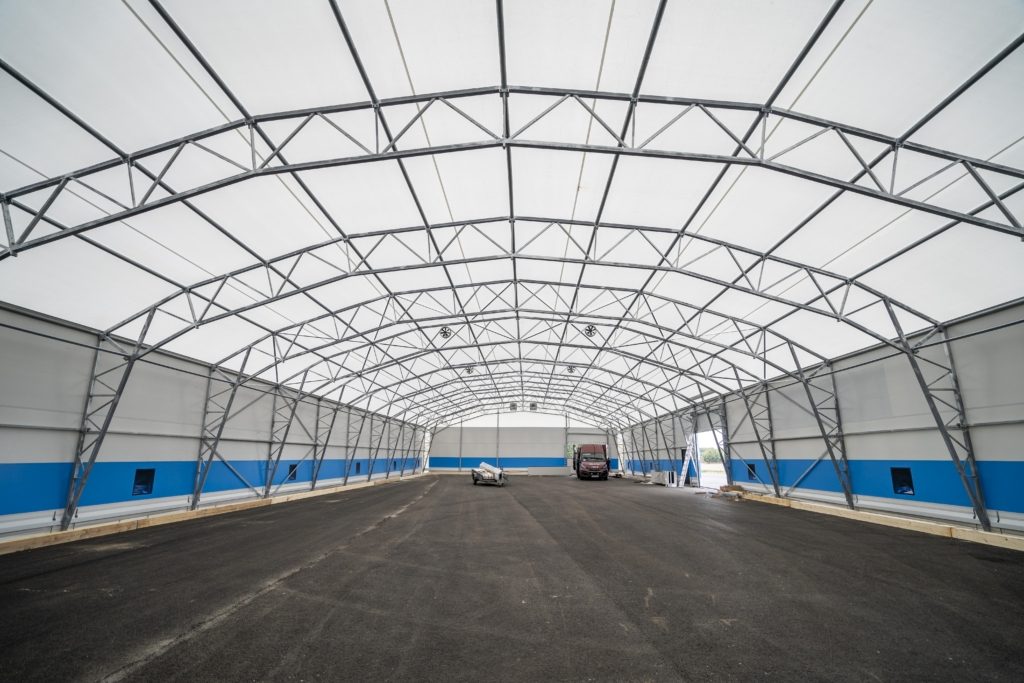
ARE THERE DIFFERENT TYPES OF VENTILATION SYSTEMS SUITABLE FOR PVC HALLS?
Natural ventilation – ventilation openings/vents with the correct placement and size ensure natural airflow.
Supply and exhaust fans – with this system, the air is drawn in from one end of the building, and sufficient airflow is created along the ridge, which is then exhausted from the other end. The building should have no airtight partitions for this system to work effectively.
Roof ventilators – are generally the most powerful and have the highest air exchange rate. However, roof ventilators require more maintenance compared to supply and exhaust fans. Nevertheless, regular maintenance is essential for any forced ventilation system to ensure proper functioning.
Unique solutions – the building is used as a drying facility or when a specific humidity level needs to be maintained inside. In such cases, an air dehumidifier is installed; in most instances, ventilation openings/vents are not required. The air dehumidifier regulates the indoor climate of the building, and the necessary air intake and exhaust openings are made during the installation of the device.
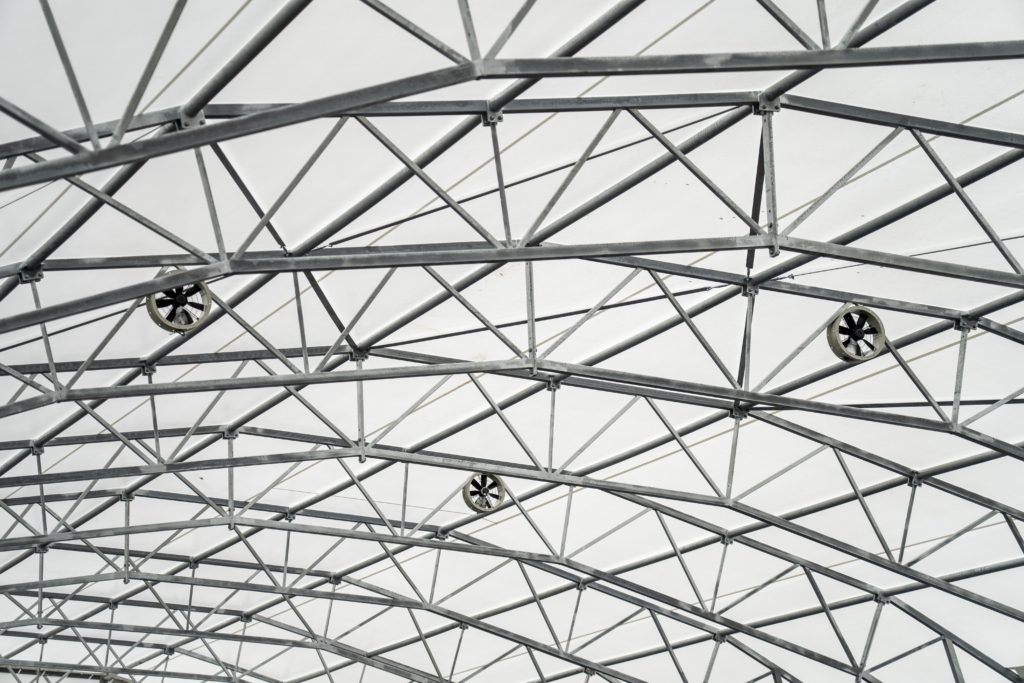
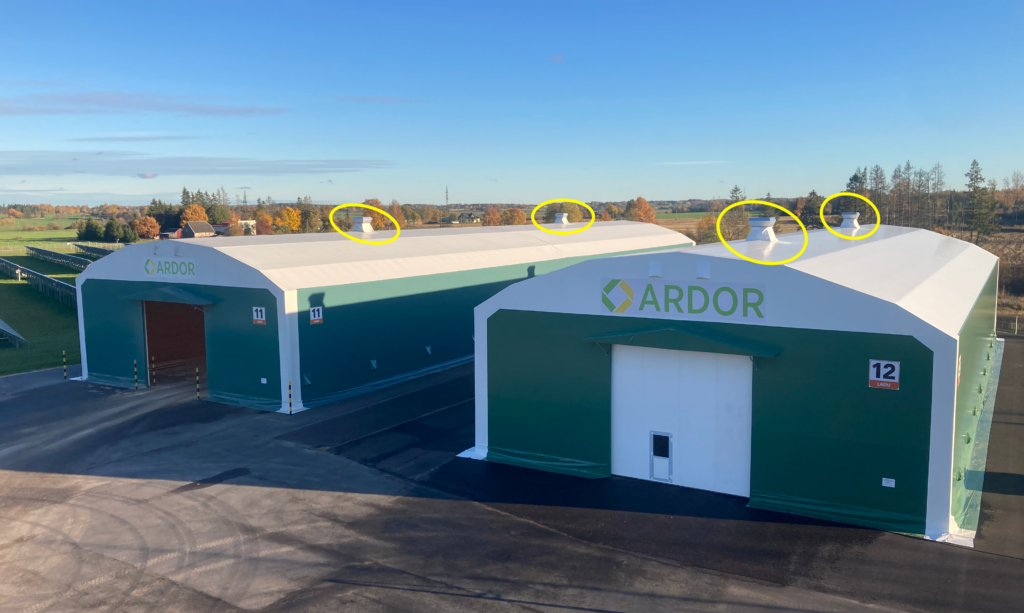
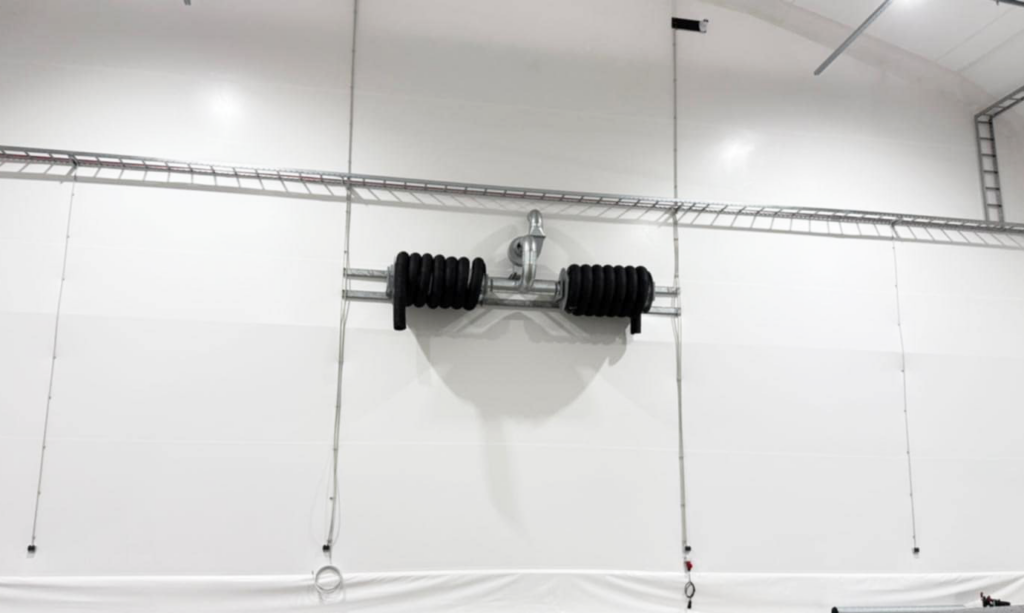
WHY IS VENTILATION IMPORTANT?
First and foremost, ventilation reduces/eliminates condensation that occurs when the external temperature rises above freezing during the day while dropping below freezing at night. According to the laws of physics, when there are plus degrees inside and minus degrees outside the building, condensation forms on the inner side of the PVC, which inevitably drips onto the floor.
IS VENTILATION ALWAYS NECESSARY?
Natural ventilation must always be present (ventilation openings with PVC mesh, both in the gable ends and around the entire perimeter). If the air does not circulate inside the building, the indoor climate becomes unpleasant and detrimental to stored goods. Packaging becomes moist and deteriorates, and metal objects corrode, etc. Ventilation presence is especially crucial in bulk storage halls.
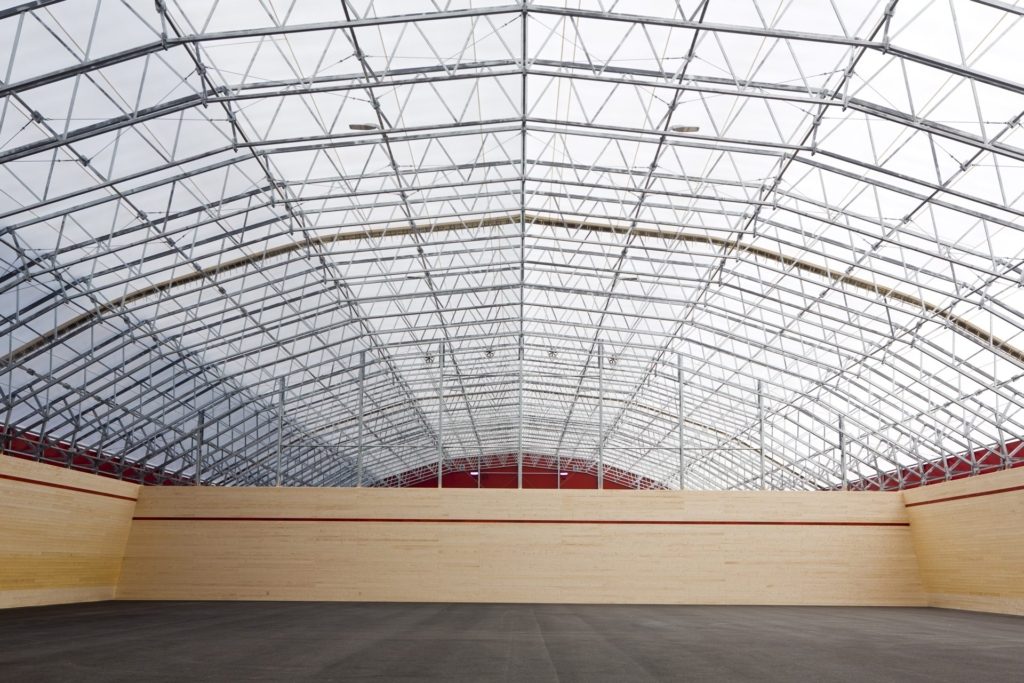
WHAT TO CONSIDER WHEN DECIDING IN FAVOR OF VENTILATION?
Firstly consider the activities in the building and the type of goods stored. Are there people working inside? Are the goods highly sensitive to moisture or appropriately packaged so that a few drops of condensation a couple of times a year won’t cause any harm?
IN WHICH TYPES OF PVC HALLS DO WE RECOMMEND INSTALLING VENTILATION?
People work inside the building – there are specific regulations regarding the required air exchange per hour and allowable humidity levels, among other factors.
Internal combustion engines are used and operated in the building – intense extraction and significant air exchange are necessary to prevent poisoning of people inside the building.
Bulk storage halls – PVC hall stores pellets, grain, or fertilizer; a well-designed ventilation system is essential. In some instances, installing an interior PVC fabric may be necessary to eliminate condensation formation completely.
Goods are not sensitive to humidity – However, natural ventilation is sometimes sufficient if the products stored in the building are not reactive to moisture and only need protection from weather conditions.
ARE VENTILATION OPENINGS PART OF THE VENTILATION SYSTEM?
Yes, ventilation openings are part of the ventilation system. In the case of using, for example, roof ventilators, if there are no ventilation openings, the building will be sucked into a vacuum because there is no sufficient inflow of air. In such a situation, the motors overheat, equipment breaks down, and the building lacks air exchange. With insufficiently sized ventilation openings, entering the building (as it is sucked into a vacuum) becomes difficult because the doors have trouble opening. However, if large doors are opened, the air is quickly sucked in through them, but this is generally not an answer.
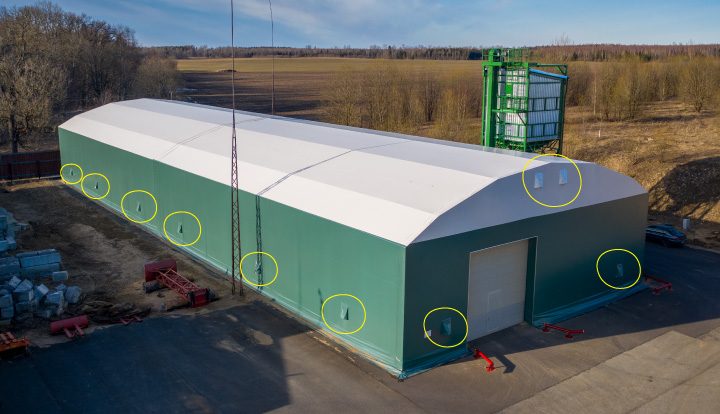
MYTHS/MISCONCEPTIONS RELATED TO VENTILATION
– It is believed that having one A4-sized ventilation opening at each end of the building is sufficient, and there is no need for ventilation openings at the lower part. However, even with natural ventilation, if there is negative pressure inside the building due to, for example, wind, air needs to come in from somewhere, which requires an adequate number of ventilation openings.
– Additionally, it is essential to consider that the openings are not at the wrong height. If the openings are too low, snow can blow in, or falling snow can block the openings, resulting in a lack of air circulation. Just like any other building, a PVC hall also requires ventilation. Ventilation creates a pleasant indoor climate for stored goods and working individuals.
If you are planning a PVC hall, it is advisable to consult our specialists beforehand. By explaining the purpose for which you are planning the PVC hall and your building’s specific needs, Finest-Hall can help determine how to address the shape of the building, sections, and door locations, and, importantly, find the best ventilation option that can be acquired along with the solution. Of course, longer-term plans can be made to ensure the addition of a ventilation system at a later stage.